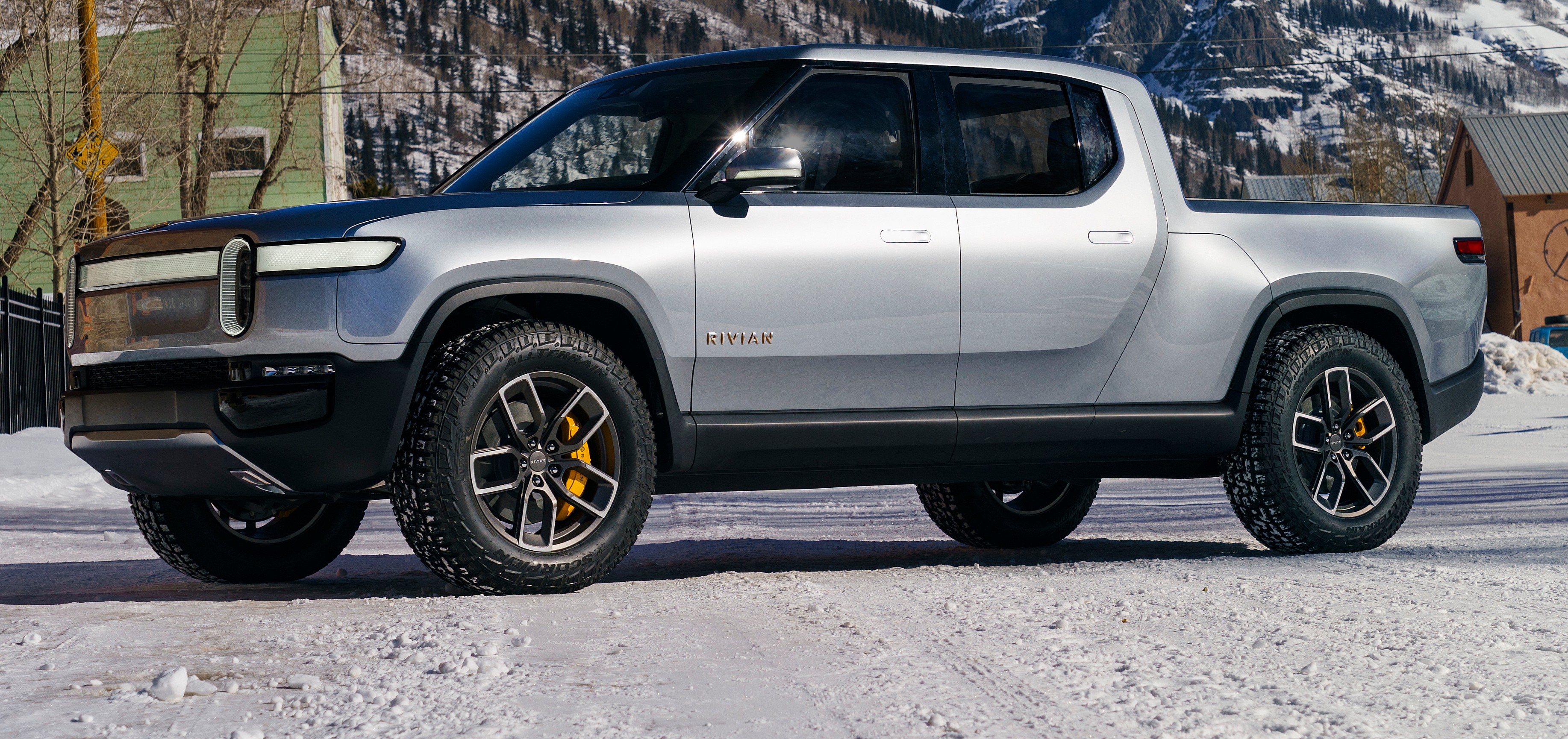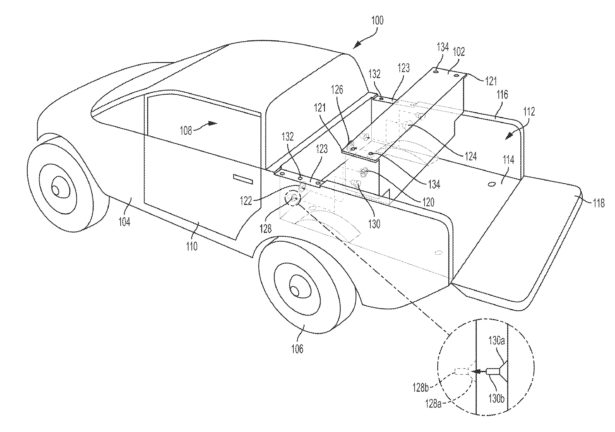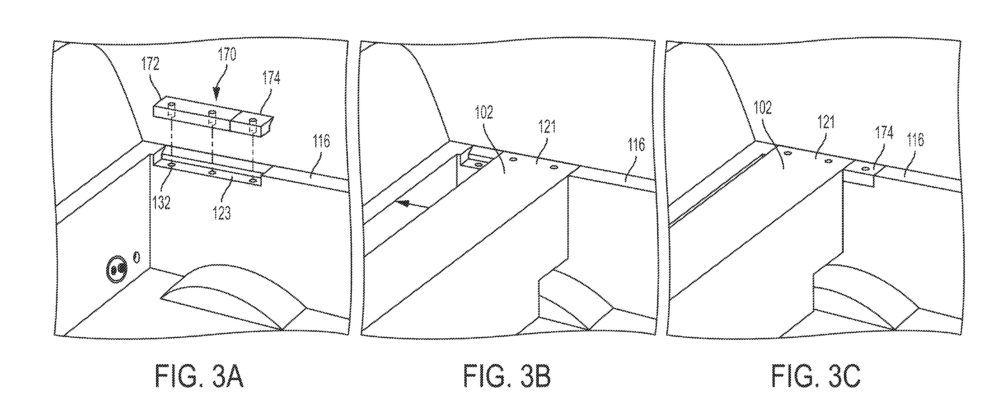
The patent, titled “Electric Vehicle With Modular Removable Auxiliary Battery With Integrated Cooling,” describes an external battery module that can be fitted to an electric vehicle, thereby providing it with additional range. This is especially important for Rivian’s trucks, since they are designed to go off-road. Thus, the company notes that there is a need for an “auxiliary battery system for an electric automotive vehicle to increase the range of the electric vehicle, and in particular, an auxiliary battery system that can be carried by the electric vehicle.”
As could be seen in the patent application, the auxiliary battery system would be installed on the cargo area of a truck. In the case of the R1T pickup, for example, the battery module would be fitted on the truck’s bed. The entire module also includes latching mechanisms and connectors, which are designed for easy installation and removal.


Illustrations depicting Rivian’s auxiliary battery system. (Photo: Rivian Automotive)
“When outfitted with the auxiliary battery, the electric vehicle can detect the fact that the auxiliary battery is attached to (e.g., mounted in) the electric vehicle (e.g., in cargo bed) and automatically set one of multiple predetermined feature sets, e.g., that pertain to driving performance of the electric vehicle. Such feature sets may set, for example, certain suspension characteristics appropriate for the attachment of the auxiliary battery, such as, e.g., a setting for firmness of ride of the vehicle, braking performance/sensitivity, nominal suspension height, effective steering ratio, etc.”
It should be noted that the auxiliary battery module design outlined in Rivian’s recently-published patent appears to be optimized for the R1T pickup truck. Based on the illustrations provided by the company, the external battery seems to take up a substantial amount of space in the all-electric pickup’s bed. With this in mind, it remains to be seen how the company would design a similar battery solution for the R1S SUV, which does not have a bed like the R1T. Nevertheless, considering Rivian’s polished approach to its designs, it is quite exciting to see how the company would equip a seven-seater SUV with a range-extending battery module.

Similar to other new automakers such as Tesla, Rivian’s first vehicles are made for the luxury niche, not the mass market. As noted by RJ Scaringe in an interview with Green Tech Media, Rivian’s target demographic are the people who are “spending $70,000 or $80,000 on a GMC Denali or a Chevy Suburban or a Land Rover Discovery or a fully loaded Ford F150.” For these potential customers, the company can tolerate no compromises, and in Scaringe’s words, “under-promise and over-deliver.” This is especially true with regards to the R1T and the R1S’ range.
Rivian’s patent application for its auxiliary battery system could be accessed here.
Source: https://www.teslarati.com/rivian-r1t-auxiliary-battery-patent/
